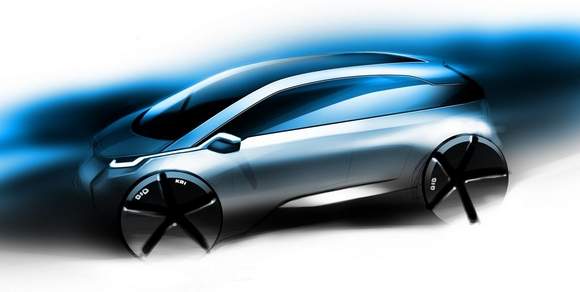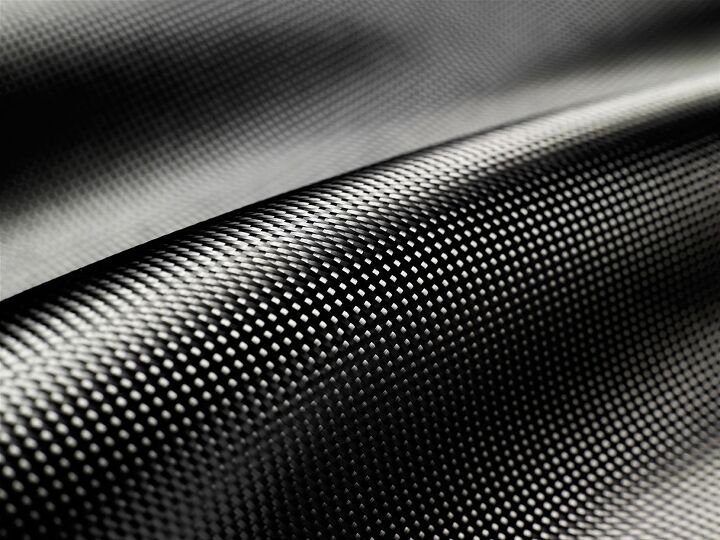#CarbonFiber
BMW Investing In A Carbon-Fiber Future Beyond I, M Brands
On the success of a first-year sell-out of the i8 and high demand for the i3, BMW is making an additional investment into its joint venture with SGL Group, with the intention of introducing carbon fiber into models beyond the i and M collections.
2014 Beijing Auto Show: BMW's "Vision Future Luxury" 9-Series Concept
Few companies are as competitive with each other as the German luxury brands. Now that Mercedes-Benz will be making the S600 Maybach edition of their S-Class fullsize sedan, BMW is responding wtih their own flagship, the Vision Future Luxury concept, introduced at the Beijing auto show on Sunday. Since Vision Future Luxury doesn’t quite fit BMW’s alphanumeric nomenclature, when it goes on sale in 2016, it will likely be known as the 9-Series, though some have suggested that it will revive the 8-Series nameplate or even be the basis of the next 7. The Neuner will be the largest car that BMW offers, with a total length of about 216 inches (5,500 mm), making it about 11 inches longer than even the long wheelbase versions of the 7-Series. Wealthy Chinese prefer to be driven, one reason for the concept’s debut in Beijing.
Volvo Capacitive Carbon Fiber Panels Could Replace Batteries, Save Weight In EVs & Conventional Cars
That CFRP cowl panel is really storing electricity.
BMW is using carbon fiber composite unibodies for the electric i3 and i8 models to reduce their weight, thereby increasing their range. Now, Volvo is using carbon fiber in a novel way for EVs. Using carbon fiber it has developed a composite material that acts as a capacitor, storing electrical energy, so theoretically body panels and structural components could act as battery equivalents. Unlike conventional batteries, which add weight to a vehicle, the carbon fiber capacitive body panels wouldn’t just power the vehicles but also reduce weight.
A Look at BMW Carbon Fiber Production for the I3 Electric Car
One of our readers, Noble713, commenting on a news items about the BMW i3, asked if TTAC could provide more coverage on BMW’s carbon fiber productions methods. The i3 EV, and upcoming i8, are built upon CFRP structures. Weight is the enemy of electric vehicles. The more weight you can take out of the actual structure of the car, the more battery cells you can carry for more power and better range, hence BMW turning to carbon fiber. It turns out that BMW has released a series of videos (bilingual, wait for the English) on that very topic. Their CFRP production uses materials made by SGL Automotive Carbon Fibers, a joint venture between the BMW and SGL groups and the effort spans the globe. SGL has expertise in carbon fiber and in 2011 BMW took a 15% stake in the company.
Strong Demand Has BMW Considering Increase in I3 EV Production as Carbon Fiber Problems Delay Builds
With demand for its i3 EV surpassing BMW’s expectations, the company’s chief financial officer, Friedrich Eichiner, told Bloomberg that the company is considering increasing production of the electric car. Though retail deliveries will not start until next month, over 8,000 orders have been booked so far. Originally, BMW hoped to sell about 10,000 i3s in 2014, but if demand stays high, the company “will adjust capacity according to demand,” Eichiner said at an Amsterdam press conference yesterday. “If demand holds, which is what it’s looking like, we will soon have to invest more.”
Alfa Romeo 4C Narrowly Avoids The Ton
We all knew that the Alfa Romeo 4C was going to be light, but the recently announced curb (looks like it’s the dry weight) weight of 1969 lbs is unprecedentedly svelte in this era. That’s the same weight as a Lotus Elise or a Volkswagen Up! That 237 horsepower turbo 4-cylinder doesn’t seem so puny anymore, does it?
Fiber Fever: Carbon Goes Mainstream
For a long time, carbon fiber was a high tech, high cost product. Slowly, carbon fiber is going mainstream. From Volkswagen to Toyota and GM, large automakers have carbon fiber projects in the works. Now, Ford is joining the bandwagon made from lightweight fiber.
Ford joined up with fiber specialist Dow Chemical “to develop cost-effective ways of using carbon fiber in high-volume cars and trucks as the No.2 U.S. automaker moves to cut vehicle weight to improve overall fuel economy,” Reuters writes.
Review: 2012 Jaguar XKR-S
At 7 years old, the XK isn’t a kitten anymore – but with a rumored 3 years until the next redesign, what’s a luxury marque to do? Make special editions, of course. On the surface, the XKR-S looks like a baby-boomer dressed like a teenager, or as the Brits put it: mutton dressed as lamb.
Steel Industry: Replace Tailpipe Emissions Testing With Lifecycle Analysis
Light-weight materials such as carbon-fiber, aluminum and magnesium are widely touted as key components of the drive towards greater fuel economy. Which explains why the automotive steel supplier industry is suddenly calling for an end to tailpipe emissions testing and a switch to the more holistic life cycle analysis testing. According to a press release from WorldAutoSteel, an industry group, the production of steel alternatives can create up to 20 times the carbon emissions of steel.
Carbon Fiber Vs. Carbon Dioxide: German Car Maker Risks A Big Gamble
Except for a lot of green talk, my German compatriots are not known for enthusiastically embracing the EV idea. Japan, even China is way ahead of them. Despite high gasoline costs (taxes, taxes), even hybrids are everything but runaway successes in the Fatherland. If Germans want to save, they buy a Diesel, or take the train. But even the train isn’t the bargain it used to be. One car company bets big on Electric Vehicles. So big, that they built a whole new factory for them. You won’t believe who.
And Now For The Carbon Fiber Age
Producers of rolled steel and car manufacturers alike are casting a wary eye towards Japan. There, Toray Industries has developed technology, that, for the first time, allows carbon fiber to be used for mass produced auto bodies. According to The Nikkei [sub], Toray will start supplying Toyota and Fuji Heavy with carbon fiber for car bodies later this year.
BMW MegaCity EV Hides Much Bigger Find: Affordable Carbon Fiber
When word of the BMW EV called „MegaCity“ first made the rounds, our Ed Niedermeyer called it “BMW’s long-rumored Neo-Isetta EV.” Now, BMW opened the first button of their electric blouse.
Ferrari Fights The Future
Despite breaking new ground in the field of brand leverage with its Ferrari World Abu Dhabi theme park, Ferrari does seem to have lost the plot a bit in relation to its “other” business building expensive sportscars. Ferrari’s abandonment of the manual transmission might be justified by faster lap times at Fiorano, and the lightning-fast, dual-wet-clutch transmissions that replace them certainly seem to help keep the Scuderia at the bleeding edge of technology (even if they’re designed and built by Getrag). But underlying the faster times, higher speeds and “digital supercar” honorifics from the motoring press, there’s a sense that Ferrari’s progress must accommodate an ever-more ambitious business plan as much as design the world’s most capable and emotive sportscars. And it’s starting to bear some troubling fruit.
Let There Be Light. Weight
When I was a kid copywriter on the Volkswagen account, grumpy but thorough VW engineers drummed one tenet of green into me: You don’t save gas with secret carburetors which the oil companies hide. You save by shedding weight. The less weight to push around, the less energy is needed to do the pushing. From the First Law of Thermodynamics to Einstein, all will agree. Like we agree on the need for a balanced diet. Then we go to the next Wendy’s, and order a triple Whopper. Despite the wisdom, cars tend to gain heft over the years like an erstwhile skinny Italian bella ragazza after the age of 30.
With tougher environmental regulations spreading across the globe, and CO2 mutating into a climate-ogre from something that used to provide the fizz in a soda, automakers remember the old engineering rule: Less weight, less gas, less crud.

























Recent Comments